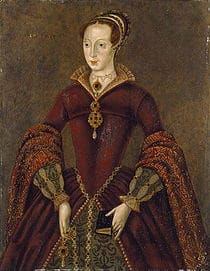 Lady Jane Grey, or Queen Jane, regularly gets missed off lists of monarchs of England, but I haven’t missed her out in my 60-second history video series!
Lady Jane Grey, or Queen Jane, regularly gets missed off lists of monarchs of England, but I haven’t missed her out in my 60-second history video series!
As I’ve explained before, the idea of this series is to give information about Tudor history in easy-to-digest 60-second chunks. Die-hard Tudor history fans don’t, of course, need these videos, but I hope they act as introductions to newbies or students.
My first four videos were on the Tudor dynasty, Henry VII, Henry VIII and Edward VI. You can catch them on the 60 Second History playlist of the Anne Boleyn Files YouTube channel.
Here’s the latest one!